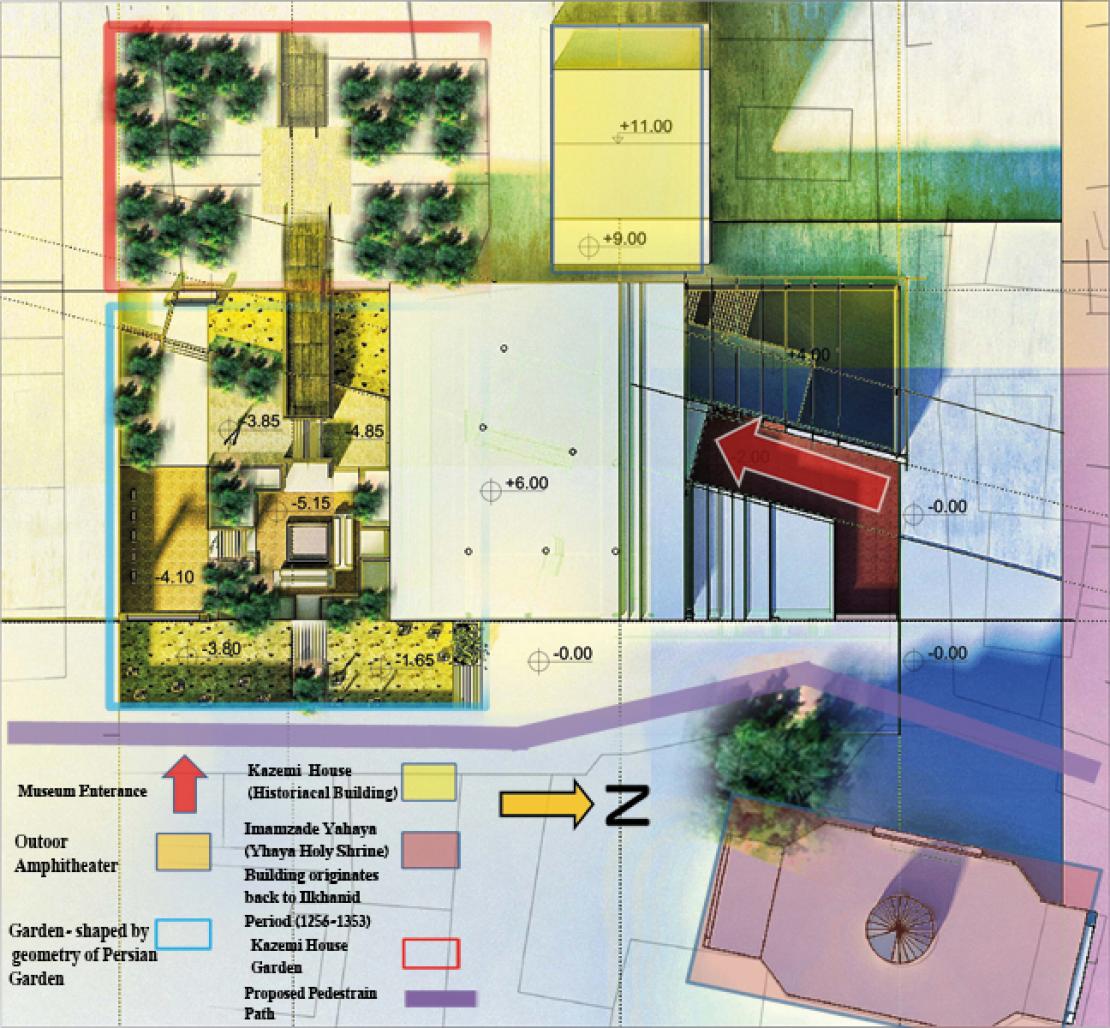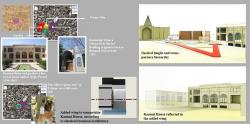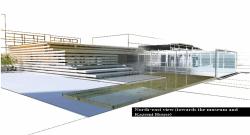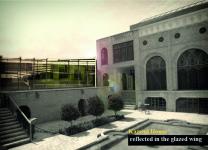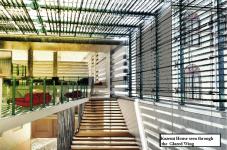Tehran has been the capital city of Iran since the Qajar dynasty (1794-1925) ,after being formally named a city in the Safavid period (about 500 years ago).
Site:
Choosing the right place for the City Museum of Tehran was a major challenge itself, since it was meant to reflect how the old continued to live and the way the historical culture was meant to revive in modern life . In the end a site in Oudlajan district (one of the citys first residential and historical cores since Safavid period) was chosen.
the site is placed in Imamzade Yahya avenue,opposite Imamzade Yahya (Yahya holy shrine). This building originates in Ilkhanid period (1256-1353).
On the western side of the museum we have the historical Kazemi House built in Qajar period.
A garden existed in the south of the proposed museum, this garden is designed to match Perian Garden geometry standards (the quadripartite structure).
Concepts:
The word Tehran itself has a meaning near Under the ground .This name origination had a major role in the concept, leading to taking most of the museum under the ground.
Another important concept was to cause a visual connection between the two historical buildings. to achieve this, transparency and height hierarchy in the museum volume was proposed, causing the Shrine to be seen from in front of the Kazemi House and vice versa.
Also a glazed wing was proposed, in order to complete the U-shaped symmetry of the House. The house is reflected in the glazed facade, bringing to mind that The roots of the future lies in the past, while time goes forward.
The House itself is visible from inside the glazed gallery, making it an object on display.
Final Form:
As to respect International agreements, the semi-historical design was avoided. Still, a great heed was taken in choosing a volume that will best allow the historical site to represent itself.
The volume is basically a sliced cube. this sliced cube is later deformed, whilst in the end a piece of it is cut away and replaced with a segment of the early cube (part where the glazed gallery is)
The whole procedure is a metaphor of historical facts and stories, what we mainly receive from the past are unreliable stories, represented by the sliced cube. the glaze segment is the part we can take as symbol of historical facts .
2013
